Top Rankings
Fort Sage Unified School District ranks among the top 20% of public school district in California for:
Category
Attribute
Student Attention
Lowest student:teacher ratio (Top 1%)
For the 2025 school year, there is 1 public charter school serving 139 students in Fort Sage Unified School District. This district's average charter testing ranking is 2/10, which is in the bottom 50% of public charter schools in California.
Public Charter School in Fort Sage Unified School District have an average math proficiency score of 12% (versus the California public charter school average of 31%), and reading proficiency score of 22% (versus the 48% statewide average).
Minority enrollment is 32% of the student body (majority Hispanic), which is less than the California public charter school average of 75% (majority Hispanic).
Overview
This School District
This State (CA)
# Schools
4 Schools
1,300 Schools
# Students
229 Students
711,386 Students
# Teachers
15 Teachers
31,388 Teachers
Student : Teacher Ratio
15:1
15:1
District Rank
Fort Sage Unified School District, which is ranked #1515 of all 1,925 school districts in California (based off of combined math and reading proficiency testing data) for the 2021-2022 school year.
The school district's graduation rate of 80% has stayed relatively flat over five school years.
Overall District Rank
#1810 out of 1941 school districts
(Bottom 50%)
(Bottom 50%)
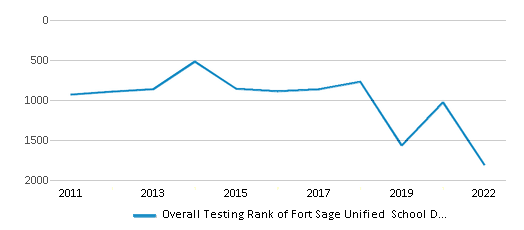
Math Test Scores (% Proficient)
6-9%
33%
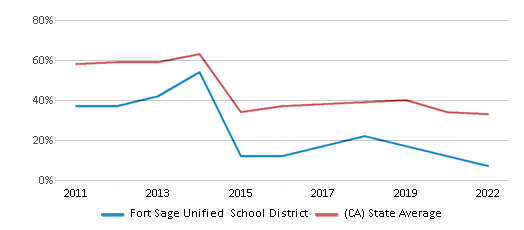
Reading/Language Arts Test Scores (% Proficient)
20-24%
47%
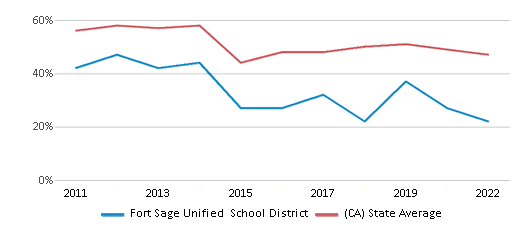
Science Test Scores (% Proficient)
20-29%
29%
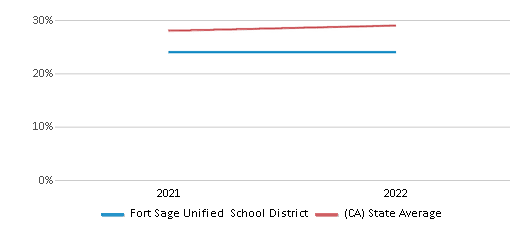
Graduation Rate
≥80%
87%
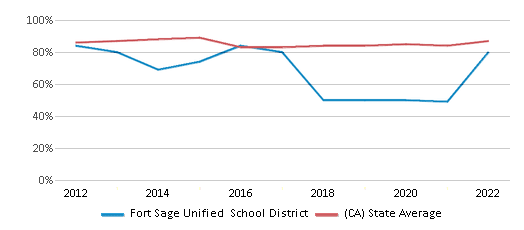
Students by Ethnicity:
Diversity Score
0.50
0.65
# American Indian Students
5 Students
3,137 Students
% American Indian Students
3%
1%
# Asian Students
n/a
49,250 Students
% Asian Students
n/a
7%
# Hispanic Students
43 Students
378,755 Students
% Hispanic Students
19%
53%
# Black Students
5 Students
48,500 Students
% Black Students
2%
7%
# White Students
156 Students
176,738 Students
% White Students
68%
25%
# Hawaiian Students
n/a
2,385 Students
% Hawaiian Students
n/a
n/a
# Two or more races Students
18 Students
48,230 Students
% of Two or more races Students
8%
7%
Students by Grade:
# Students in PK Grade:
-
83
# Students in K Grade:
28
60,517
# Students in 1st Grade:
14
46,070
# Students in 2nd Grade:
18
47,155
# Students in 3rd Grade:
12
46,520
# Students in 4th Grade:
15
46,583
# Students in 5th Grade:
19
46,919
# Students in 6th Grade:
7
54,274
# Students in 7th Grade:
14
57,837
# Students in 8th Grade:
24
57,970
# Students in 9th Grade:
14
70,272
# Students in 10th Grade:
20
64,790
# Students in 11th Grade:
23
57,670
# Students in 12th Grade:
21
54,726
# Ungraded Students:
-
-
District Revenue and Spending
The revenue/student of $19,341 in this school district is less than the state median of $19,974. The school district revenue/student has stayed relatively flat over four school years.
The school district's spending/student of $16,140 is less than the state median of $18,396. The school district spending/student has stayed relatively flat over four school years.
Total Revenue
$4 MM
$116,387 MM
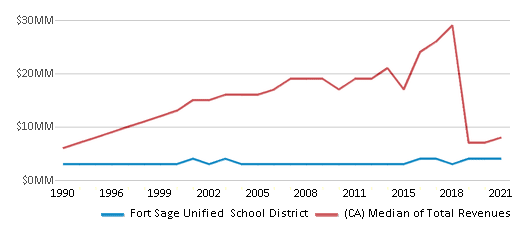
Spending
$4 MM
$107,188 MM
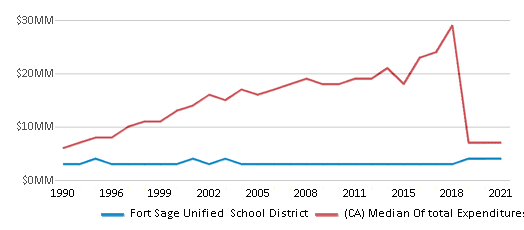
Revenue / Student
$19,341
$19,974
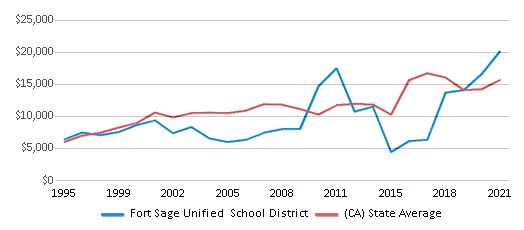
Spending / Student
$16,140
$18,396
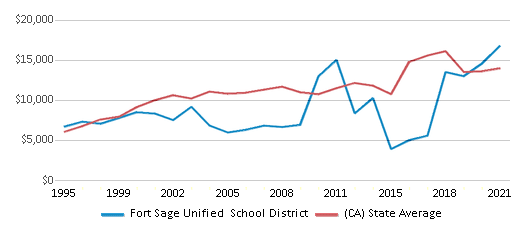
Best Fort Sage Unified School District Public Charter Schools (2025)
School
(Math and Reading Proficiency)
(Math and Reading Proficiency)
Location
Grades
Students
Rank: #11.
Mt. Lassen Charter
Charter School
(Math: 10-14% | Reading: 20-24%)
Rank:
Rank:
2/
Bottom 50%10
100 David S Hall St.
Herlong, CA 96113
(530) 827-2129
Herlong, CA 96113
(530) 827-2129
Grades: K-12
| 139 students
Recent Articles

What Is A Charter School?
Explore the world of charter schools in this comprehensive guide. Learn about their history, how they operate, and the pros and cons of this educational innovation. Discover key facts about charter schools, including admission policies, demographics, and funding, as well as what to look for when considering a charter school for your child.

10 Reasons Why High School Sports Benefit Students
Discover the 10 compelling reasons why high school sports are beneficial for students. This comprehensive article explores how athletics enhance academic performance, foster personal growth, and develop crucial life skills. From improved fitness and time management to leadership development and community representation, learn why participating in high school sports can be a game-changer for students' overall success and well-being.

February 05, 2025
Understanding the U.S. Department of Education: Structure, Impact, and EvolutionWe explore how the Department of Education shapes American education, from its cabinet-level leadership to its impact on millions of students, written for general audiences seeking clarity on this vital institution.





